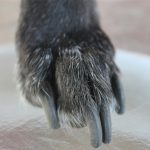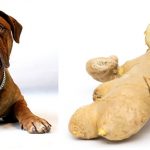Are you interested in Cavoodle or Cavapoo pups? A cross between two purebred dogs, namely the Cavalier King Charles Spaniel and the Poodle, the Cavapoo offers the best of both worlds. There’s no doubt why this designer dog is among the most popular types of Doodle dogs today. Learn how to care for them and know what it is like having these pups as pets.
History
The Cavapoo was first developed sometime in the late 1990s. It did not take too long before this cross gained admiration from the dog community, especially in dog-loving countries like the United Kingdom and the United States. The main goal of developing Cavoodles was to have a lapdog that does not shed. If you want to have a Cavalier King Charles Spaniel but do not want to have a heavy-shedding pet, the Cavapoo can be a good option for you.
Appearance
A Cavapoo is among the smallest of all Doodle dogs, so it is a good choice for pet parents living an urban lifestyle. Its small built makes it suitable for apartment living. When measured to the withers, a Cavapoo stands up to 14 inches tall and weighs between 7 to 18 pounds, depending on the variation of Poodle used in developing the dog. A bigger one is an offspring of a Standard or medium-sized Poodle while a smaller one is an offspring of the Toy Poodle.
Like any typical newborn dog, Cavapoos have soft puppy coats at birth. Their waves or curls will only start to appear after a few weeks. The color of their coat is usually the same from birth until adulthood. Some of these pups have coats in solid black, white, and gold while some sport combinations of three or two colors. A Blenheim Cavapoo puppy has a brown and white coat while the tri-colored ones are black with tan and white marks.
Cavapoo Puppy Checklist
Are you bringing home a puppy for the first time? Having a new pet can be exciting, but it can be overwhelming, too. To make the adjustment period easier for you and your pet, it helps to invest in the essentials. Here are some things you will need in time for your pet’s arrival:
Crate – these come in different materials, styles and sizes, but for Cavapoos that are small in size, an 18”x18” or an 18”x24” crate will be enough. Crates bigger than that will make your Cavapoo feel like it is fine to mess one side then sleep in the other. When buying a crate for your pooch, choose one that comes with a large opening so your pet can get inside comfortably and easily. If you like to travel often, consider a foldable plastic or metal crate.
Collar and leash – a collar is a must-have during walks because it ensures that your pup will be easily controlled outside. But if you are worried that it may put a strain on his back and neck, consider getting a harness instead. It is better to use a harness to keep your pooch from pulling.
Dog tags – you should put one to two of your phone numbers on the tag to make sure you will be contacted easily in case anything happens. Tags serve as an instant identification if your pet gets lost while playing outside. Even microchipped dogs need to have a tag containing important details like the name of the microchipping company of your pet and the company’s phone number.
Food and water bowls – for small dogs like Cavapoos, it’s best to use a non-slip and shallow feeding bowl. You don’t need the biggest bowl out there or the fanciest feeding bowls even if your pup likes eating a lot. Plastic bowls are cheap and lightweight but they can easily develop cracks, which can accumulate lots of bacteria. Stainless steel ones are a bit pricier but are worth buying because they are easier to clean and can withstand wear and tear. If your pet eats too fast, consider a slow feeder or a puzzle-like feeder to help your pooch slow down his eating and prevent bloating.
Microchip – depending on where you live, you will need to provide an up-to-date microchip for your pup because it is required by law. In some countries, like Australia, breeders are mandated to microchip the pups before selling them. The chip, which is about the size of a rice grain, can be used to track dogs. It is implanted on the neck area once the pup is three months old.
Poop bags and holder – these are must-haves, especially if you are planning to go out with your dog. It is part of social etiquette to pick up after your pooch regardless of where you are in the world. If you want something earth-friendly, consider a biodegradable or compostable poop bag. There are even flushable poop bags which you can use not just outdoors but also for potty training your pup.
Toys – it is normal for pups to bite or play with their mouths because it’s their way of exploring the world around them. Some pups also can’t help but bite during the teething stage. But to stop your dog from biting before it turns into destructive behavior, it will help to give him some chew toys. A soft rubber toy is ideal for teething dogs and you can even find ones that can be filled with treats.
Brush – you can use either a pin brush or a bristle brush in grooming your pet, since it is the most recommended type of brush for Cavapoos. The bristle side is ideal for getting rid of the dead fur while the pin side can be used for keeping their coat shiny. You can buy these brushes separately or buy a two-in-one or combination brush which already comes with a pin side and a bristle side.
Dental kit – it should contain dog toothpaste, toothbrush, and dental chews. Dogs, especially puppies, should not use human toothpaste because many of these products may have xylitol which is considered deadly to dogs in certain quantities. Doggie toothpaste comes in many delicious flavors your dogs will like so you will not have a problem introducing tooth brushing to your pooch.
In addition to these puppy essentials, you will also need the help of certain people in raising your new buddy. The first thing you will need to keep in mind is finding a good veterinarian nearby. You can ask friends and family members for good vets in your locality. If there is no one to look after your pet while you are not around, it will be helpful to pay a pet sitter or a dog walker.
Feeding
Puppies should be exclusively breastfed by their mothers from birth until the fourth week of age. In the event that the mother cannot nurse her pups because of health reasons, a breeder should consider puppy milk formulas. Milk replacers normally contain protein isolates, skimmed milk, and vegetable oil as their main ingredients.
If you want something natural that contains quality proteins, you may give the pup dehydrated goat’s milk. It is easy to digest so it can be a good option for pups with a sensitive digestive system. It’s healthier since it’s not formulated but it’s pricier than ordinary puppy milk replacers. A premium brand of dehydrated goat’s milk costs three to four times than most formulas.
From one month of age onwards, a pup can start eating healthy puppy food. The pup’s food should have the right amount of nutrients he needs to grow properly. There are certain factors you will need to consider before giving any solids to your puppy. This includes his levels of activity, his breed, and age.
Note: Consult your veterinarian if your pup suffered from diarrhea or gastrointestinal upset after eating something out of his usual diet. Transitioning from milk to solids can potentially cause a few changes in your pup’s system.
Exercise
Cavapoos are little balls of energy so be prepared for lots of walks. However, these dogs should only be given the right amount of physical activities for their age. Your puppy’s joints are still developing and you don’t want to damage them by exercising your pet too much. You can exercise your new buddy twice a day for around 15 minutes until he is three months old. This can increase to up to 20 to 30 minutes as your pup grows older.
Daily walks are the most recommended types of activities for young dogs. Walking is safe and prevents them from being obese, which can be a problem if your pooch likes to eat a lot. Just remember to be a responsible owner and keep your dog on leash while you are outside. It also helps to bring poo bags when outdoors for proper disposal of your pup’s waste.
Common Puppy Health Problems
All puppies, regardless if they are purebred or crossed, will be at risk of certain health problems. Young dogs are more susceptible to illnesses than adult dogs that have already been vaccinated. Here are a few problems to look out for if you have a Cavapoo puppy:
Parvovirus – it is highly transmittable so your pups can be contaminated with this virus even if they do not have direct contact with contaminated feces. The common signs to watch out for are vomiting, loss of appetite, and bloody stools. It can be cured through a number of treatments including antibiotics, probiotics, colostrums, and injectable vitamins.
Distemper – it is not usual for dogs to develop colds, so an unvaccinated pup with a runny nose may be at risk of distemper. Unfortunately, there is no medication currently available for canine distemper so your pup’s only defense from this viral disease is vaccination. A puppy that already acquired distemper should be given supportive care that includes IV fluids and anti-seizure drugs.
Intestinal parasites – pups can contact parasites after ingesting eggs or spores of roundworms or hookworms from contaminated water, soil, food, and even feces. Some pups can even have them from birth from their mother. The usual signs of parasitical infestation in pups are stomach upsets and loose stools. The pup should be given dewormers recommended by a vet.
Kennel cough – this is characterized by honking and dry cough that persists for days. It can be pretty serious since it is caused by both virus and bacteria. It can affect the upper respiratory tract including the lungs, voice box, and windpipe. The fastest way to treat kennel cough in dogs is to give antibiotics prescribed by a veterinarian.
Protect your pup from these life-threatening diseases by ensuring he gets his essential vaccines on time. Your puppy should get the 5-in-1 vaccine from six to eight weeks of age. The 5-in-1 vaccine for dogs fights against distemper, parvovirus, hepatitis, leptospirosis, and parainfluenza. This vaccine, including rabies and Bordetella should be given yearly. Your puppy should also be de-wormed at two weeks and should be given heartworm preventive medicine starting at three months of age.
Price
The price of a Cavapoo averages at $1,500 per pup but it can go higher, up to $1,800 or $2,000 depending on breeder and pedigree. When buying a Cavapoo, ask the breeder for important documentation like the microchip and vaccination records, as well as the vet history. You can even find pups that were already crate and toilet trained.
Conclusion
A Cavapoo pup is well-recognized for its endearing looks because it closely resembles a teddy bear. But there is more to this dog than its charm. The adorable personality of the Cavapoo makes it the perfect addition to any household.






















